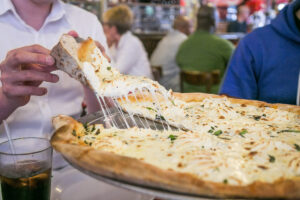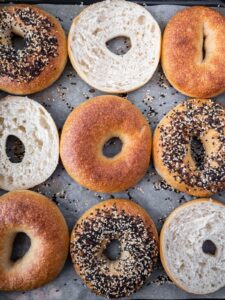Last Updated on December 13, 2025 by Emma Fajcz | Published: August 1, 2022
There are no other cities in North America that have as many iconic, must-try-at-least-once-in-your-life dishes. But that’s New York City for you. But how did these famous foods from New York begin?
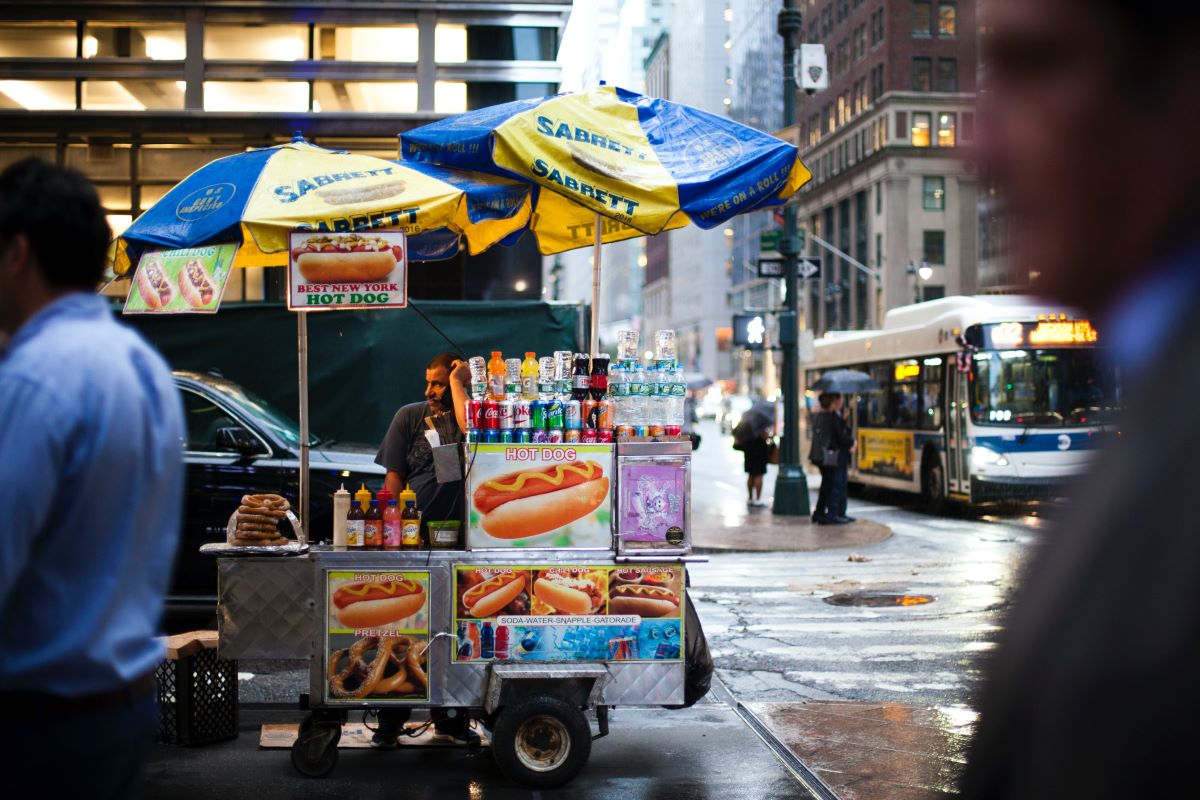
New York is a city of immigrants. And the dishes that have become associated with it are largely related to immigration patterns. It’s no surprise that bagels, pastrami, and hot dogs were early versions of iconic Big Apple fare. Since the wave of people who immigrated here 120 or so years ago were from Central and Eastern Europe. It’s also no coincidence that food that later became highly connected to Gotham City, like, say, General Tso’s Chicken, reflects the wave of people who later immigrated here from Asia.
In 50 years, there will be a new wave of iconic dishes in New York that reflect early-21st-century immigration patterns too.
And so here is a list of the most famous foods from New York and where to eat the. Most of them are decidedly old school. But there are a few newer foods that became instant classics and are impossible to ignore.
Bagel with cream cheese and lox
The bagel is widely associated with New York. Specifically, New York Jewish eating culture. It is said that Polish Jews brought bagels with them when they immigrated to New York starting at the end of the 19th century. It didn’t take long for New Yorkers to embrace the bagel. By 1900, people were indulging in what was called the “Bagel brunch,” a combo that includes cream cheese, lox, capers, tomato, and red onions all stacked up on a bagel. Today the bagel is an integral part of the culinary fabric of New York City.
Where to eat it: Discussing which place in New York makes the best bagel is a way to start a fight on the streets of the city. But some of the best-known and best-liked bagel places include Tompkins Square Bagels in the East Village, Murray’s Bagels in Greenwich Village, Sadelle’s in Soho, and Russ & Daughters on the Lower East Side.
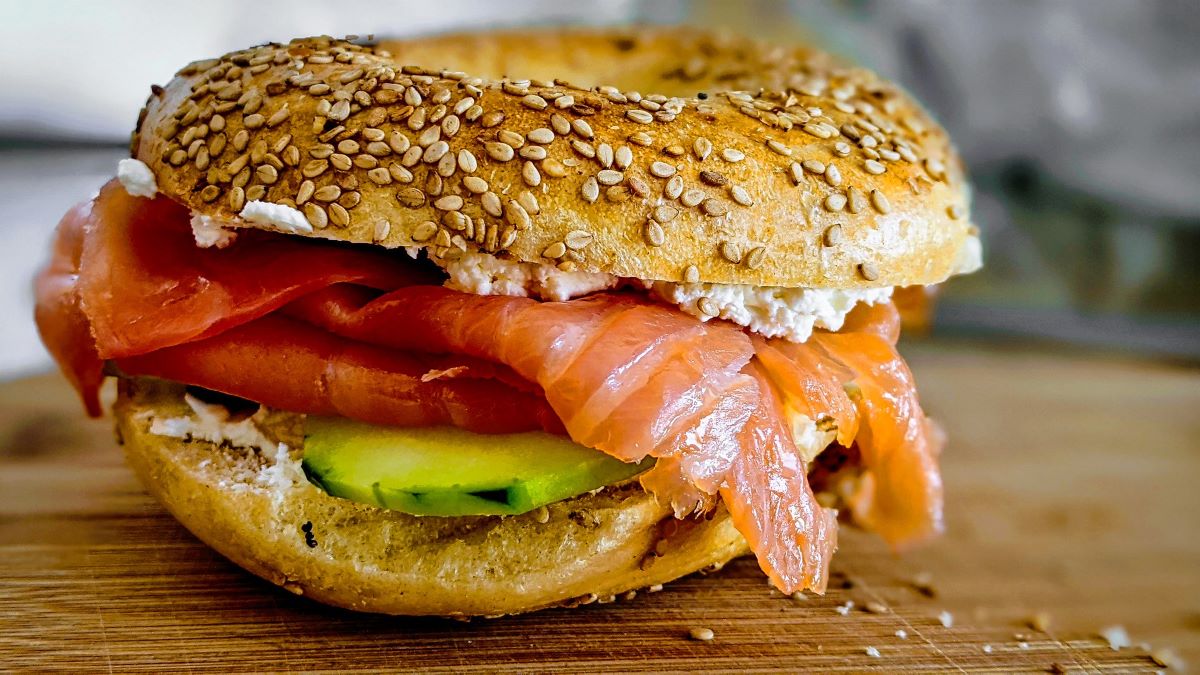
Cheesecake
Cake with cheese in it has been around for as long as anyone can remember. But the New York-style cheesecake, the kind that has become the de rigueur version, was reportedly first created in 1872 in the town of Chester, NY. Others claim that German immigrant Arnold Reuben invented it in 1929 and put it on the menu of his Midtown restaurant. And yes, this is the same Reuben who also created the eponymous sauerkraut-and-pastrami sandwich, now called The Reuben.
Whatever the case, cheesecake, which is gobs of egg yolk-spiked cream cheese on a cookie crust, is firmly planted in the New York City food domain.
Where to eat it: Junior’s, a Downtown Brooklyn eatery since 1950, is nearly synonymous with New York-style cheesecake.
Chopped Cheese Sandwich
Made on a grill, the chopped cheese is ground beef, onion, tomato, and melted cheese and then put in a hero roll. The sandwich possibly originated at a bodega in East Harlem called Hajji’s Deli, but there is no consensus. It is also on sandwich boards in upper Manhattan, the Bronx, and Queens. Around the middle of the last decade, some hipster food bloggers “discovered” the chopped cheese and suddenly the city’s foederati were gravitating to northern Manhattan to try it. It wasn’t long after, that the chopped cheese could be found on menus in newly opened hipster restaurants in Brooklyn. It was even recently seen at a sandwich shop in Belgrade, Serbia.
Where to eat it: Blue Sky Deli, the bodega also known as Hajji’s Deli, on E. 110th Street and First Avenue, would be the first place to start.
Insider’s tip: In the Bronx? Make sure to check out our top picks for restaurants in the Bronx!
Cronut
In the Spring of 2013, at his eponymous SoHo bakery, French pastry wizard Dominique Ansel revolutionized the pastry world. That’s when he got the idea to marry the croissant and the doughnut. With that, the cronut, the Frankenstein of pastries, was born. And what an oh-so-delicious union it has been since. The curious and the hungry lined up every morning, as the queue would perpetually snake around the block until a bakery employee would make the disappointing announcement that they were sold out for the day. The lines are much shorter today but there are still queues for the cronut. Bakers around the world tried to copy it, but the best is the original. So wake up early, point yourself to SoHo and join the line.
Where to eat it: Dominique Ansel Bakery on Spring Street near Thompson Street opens at 8 am Monday to Saturday and 9 am on Sundays.
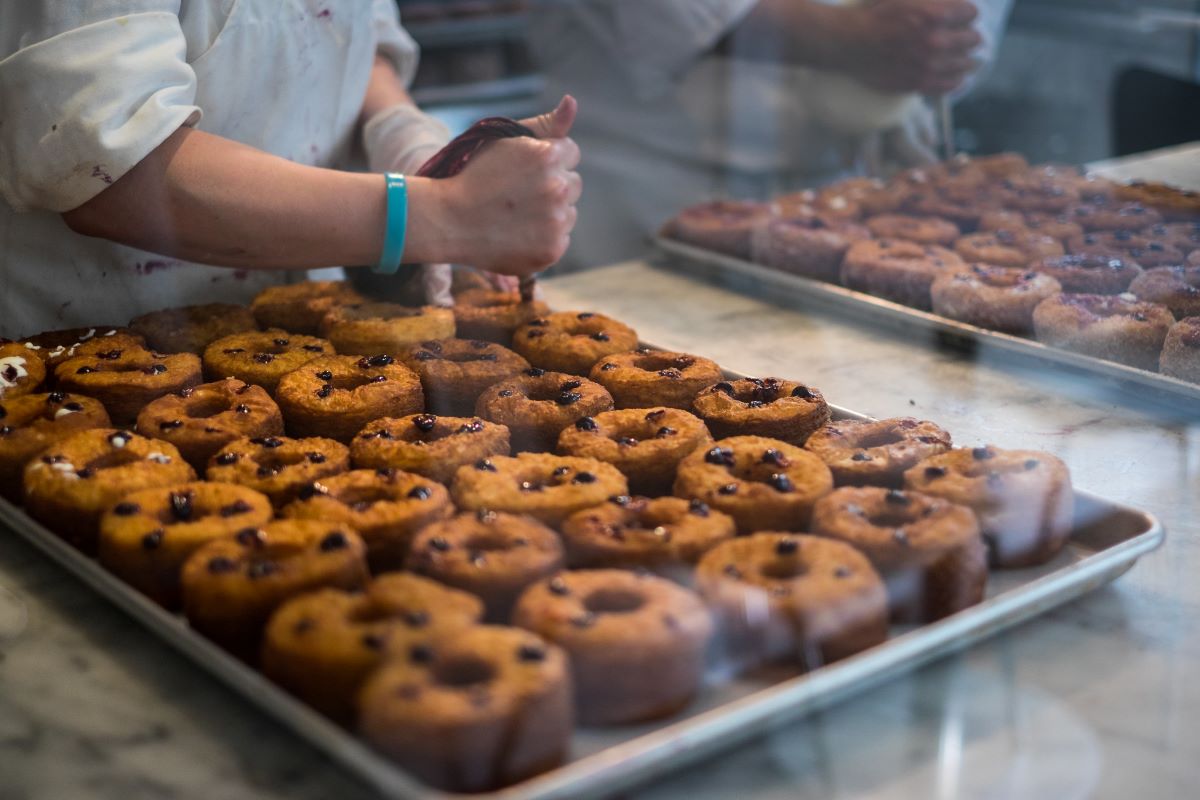
Dirty Water Dog
The utilitarian hot dog first appeared on the streets of New York City in the 1860s, sold by German immigrants, under the name “dachshund sausages.” Soon enough, carts selling this tubular meat in a bun popped up all around the city and became a street food staple of the Big Apple. Today, hot dogs compete with kabab carts and food trucks selling pretty much everything. But you can still find karts selling ‘dirty water dogs,” as they’re nicknamed because the frankfurters linger in a tray of hot water until ordered.
Where to eat it: look for the blue-and-yellow umbrellas on busy street corners or go to Papaya Dog on Sixth Avenue and West 4th Street in the West Village.
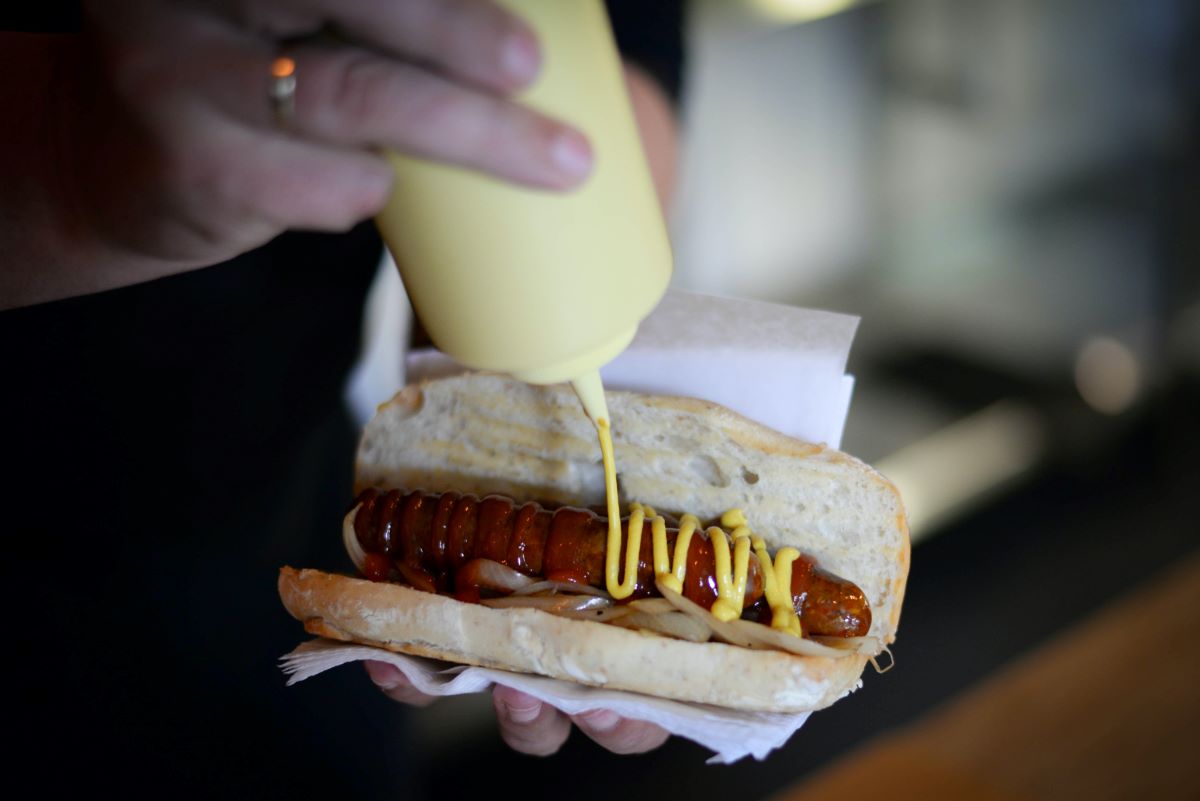
Egg and Cheese on a Roll
Like the chopped cheese, the egg and cheese on a roll is a bodega or deli sandwich. Unlike the chopped cheese, though, this one is nearly ubiquitous. Add bacon to this morsel of morning deliciousness and the name becomes a BEC (bacon, egg, and cheese). You can choose how you want your egg cooked but the default is scrambled. A proper BEC should have meat, cheese, and egg in every bite.
Where eat it: Pretty much any and every bodega and deli in the five boroughs of New York City.
General Tso’s Chicken
This fried, sticky sweet chicken dish first appeared in the Chinese region of Hunan before the chef fled to Taiwan and established himself there. In the late 1960s or early ‘70s, a chef from Shun Lee Palace in New York City traveled to Taiwan to find some new recipes, and there he apparently discovered General Tso’s chicken. He sweetened the recipe a bit to conform to American tastes and put it on the menu at Shun Lee. Slowly, news spread of this sweet and sticky chicken dish named after a 19th-century Hunanese general. General Tso’s chicken is now on nearly every menu of every Chinese restaurant in America and Shun Lee Palace in New York played a major part in popularizing it.
Where to eat it: Shun Lee Palace is still open and still serving General Tso’s chicken, the dish it popularized all over the United States and beyond. Alternatively, Jiang’s Kitchen in the East Village serves up a very good version of it too.
Mutton Chop
In 1885 one Albert Keen opened up a steakhouse in Manhattan’s Garment District and named it after himself. The restaurant became famous as a pipe depository. Regular patrons could exercise their masculinity by smoking away at their pipes while feasting on red meat. And the restaurant would keep their pipes until their next visit. Regulars included Babe Ruth, Albert Einstein, and Theodore Roosevelt. Today over 50,000 pipes hang from the ceiling.
But that’s not really the reason why Keen’s is perpetually packed. Even though it’s technically called “Keens Steakhouse,” the mutton chop here has become a signature dish and one of the most iconic food items in the city. First-timers or twenty-first-timers should order it—just don’t ask for your pipe.
Where to eat it: Keens Steakhouse, of course, located on West 36th Street near Sixth Avenue.
Pastrami on Rye
According to Big Apple lore, pastrami first appeared in New York City in the late 19th century when a Lithuanian man named Sussman Volk served it at a restaurant. He was originally offered the recipe by a Romanian friend as a way of paying him back for a favor. What no one knew at the time was that this Romanian technique of curing meat would become a New York City staple. This tender, seasoned, brined, and smoked brisket is now New York City to the core.
Where to eat it: the obvious place is the famed Lower East Side spot, Katz’s Deli. Alternatively, Pastrami Queen on the Upper East Side is excellent too.
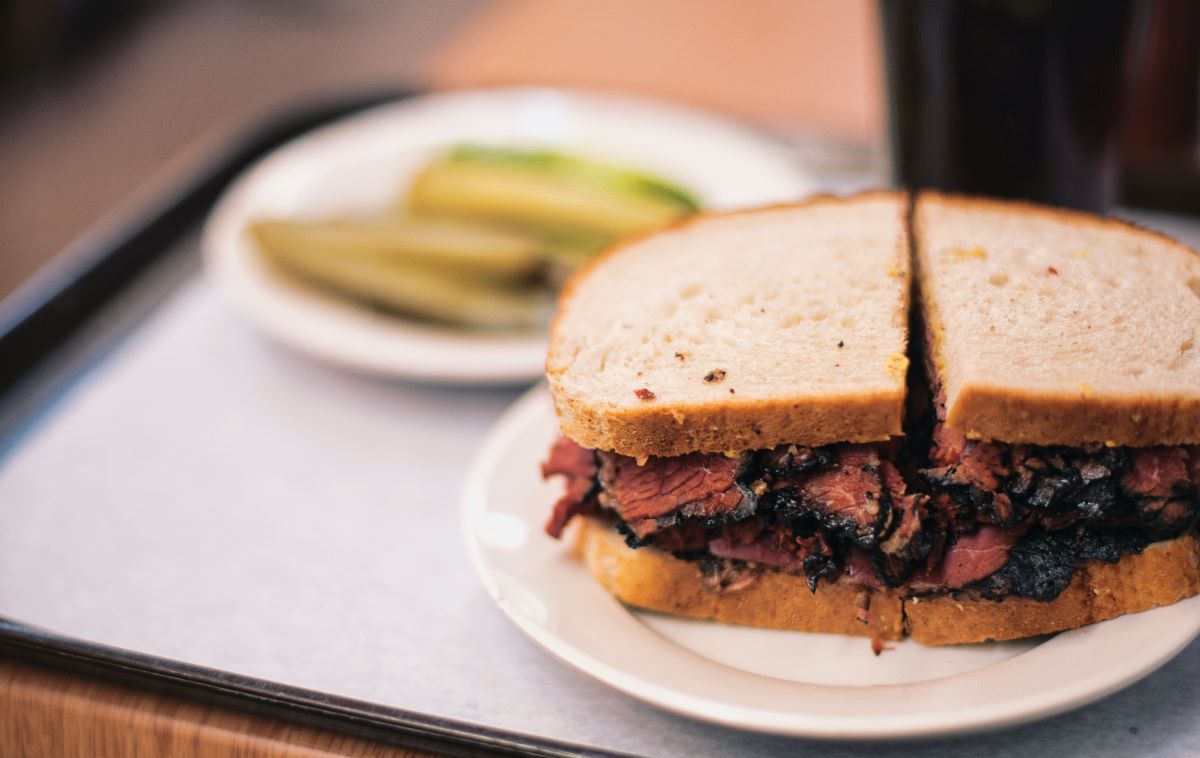
Insider’s tip: Sanwich lovers, rejoice! We’ve compiled a list of the very best sandwiches in NYC.
Pizza slice
New York-style pizza evolved from Neapolitan pizza, which was brought here by southern Italian immigrants starting in the latter half of the 19th century. One of those pizza-making immigrants was Gennaro Lombardi who opened an eponymous pizzeria in Little Italy in 1905, possibly the oldest pizzeria in the United States. Another one, was his employee, Totonno Per0 who opened his own (also eponymous) pizzeria in Coney Island in 1924.
Unlike Naples, which cooks its pizza in a wood-fired brick oven, Lombardi and Totonno defined New York pizza by cooking it in a gas-lit oven, thus giving the dough-base of the pizza a crispier texture. And the fact that they started slicing the pies, which was unusual in Naples, also set it apart from other types of pizza in Italy. Whatever the case, New York-style pizza was born.
Where to eat it: Lombardi’s and Totonno’s are still open and going strong (they only do whole pies, by the way). Joe’s Pizza, located in Greenwich Village, makes a superior slice. (There are a few locations around the city but the original, Greenwich Village location is the best.)
Pork Buns
In 2004, a young unknown but accomplished chef named David Chang opened up his first restaurant in New York’s East Village. Momofuku Noodle Bar was a Korean-Japanese mashup serving excellent ramen and sauteed rice cakes. But there was one dish that drove palates into a frenzy: the pork buns. Two thick fatty slices of slow-roasted pork belly, a few squirts of hoisin sauce, a couple of slices of cured cucumber, and then all assembled onto a soft steamed bun. The result is heaven for the taste buds.
Chang, of course, didn’t invent the pork bun but he pretty much perfected it. You can now find pork buns on menus all over the city but if you want the best, you have to go to Momofuku Noodle Bar. The pork buns are so popular, that they don’t even list them on the menu anymore. You just have to ask for it.
Where to eat it: Momofuku Noodle Bar is located in the East Village at First Avenue near East 10th Street. There is also a newer location on the third floor of the Shops at Columbus Circle on the southwest corner of Central Park.
Porterhouse Steak
New York City is a steakhouse town. And the porterhouse cut of meat is the quintessential steakhouse steak. It’s first dry-aged for 28 days. Upon ordering, the hunk of meat is placed in a broiler until the desired temperature is achieved (hopefully, medium rare). It’s rested and then cut before the theater begins as the plate of sizzling steak is presented to the table. It’s a very New York experience.
Where to eat it: Steakhouses are sprinkled around the city but the most New York-y New York steakhouse is Peter Luger.
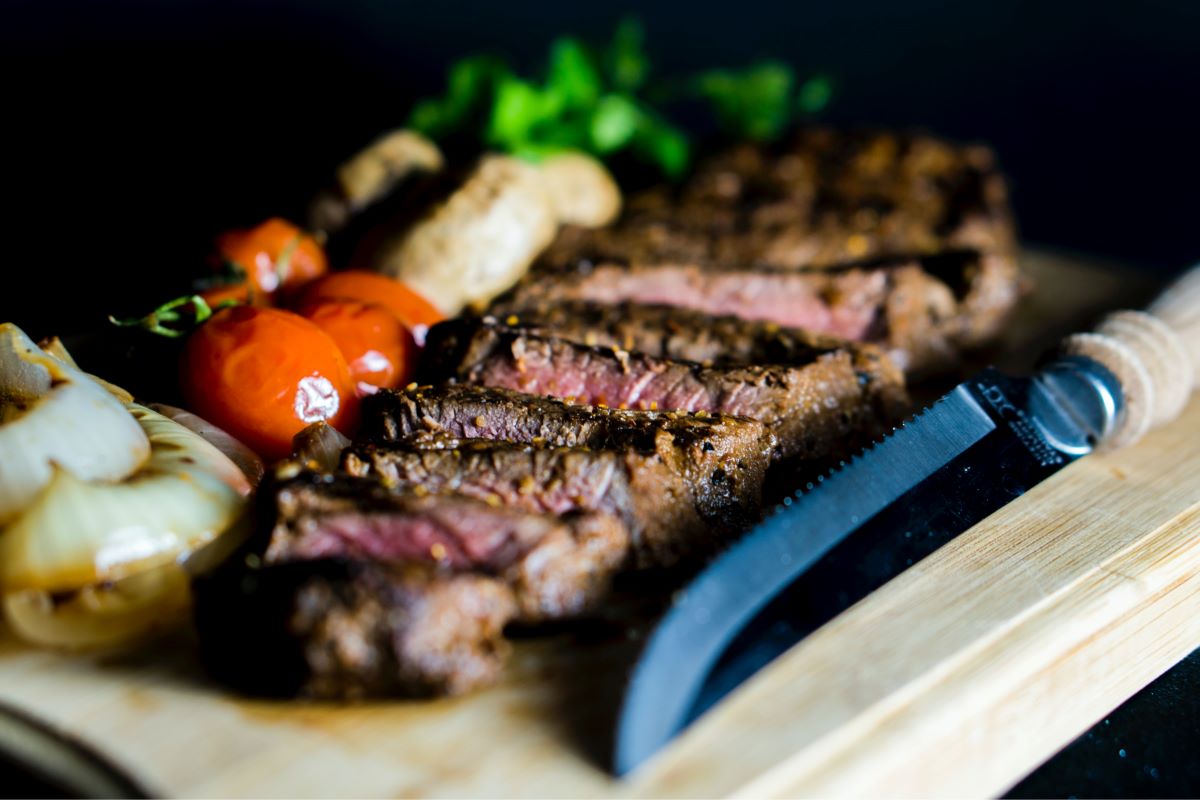
Soup Dumplings
Soup dumplings, or xiao long bao in Mandarin, are a culinary miracle. Upon hearing “soup dumplings” you might envision a bowl of soup with dumplings bobbing in the broth. Nope. It’s the other way around. The dumplings, usually filled with crab and pork, actually encase the broth as well. Hailing from Changzhou, located in southern China (but very much associated with Shanghai), xiao long bao became popular in New York around the turn of the millennium by the Chinatown restaurant Joe’s Shanghai. They’ve since become a staple at Chinatown restaurants and everyone should eat them at least once.
Where to it: Joe’s Shanghai might be the obvious starting point. But Pinch Chinese in SoHo, Red Farm in the West Village and Upper West Side, and Nan Xiang Xiao Long Bao and Kung Fu Xiao Long Bao, both in the Chinatown in Flushing, Queens are making superior soup dumplings these days.
Explore NYC Like a Local
Join one of our top-rated New York City tours! With the help of our expert local guides, you’ll get to experience New York City up close and learn about its fascinating history and varied culture.

